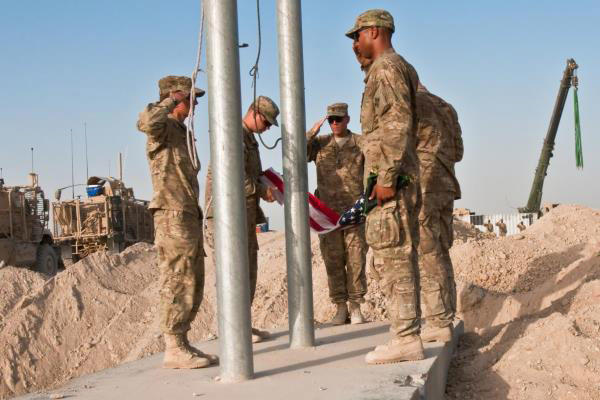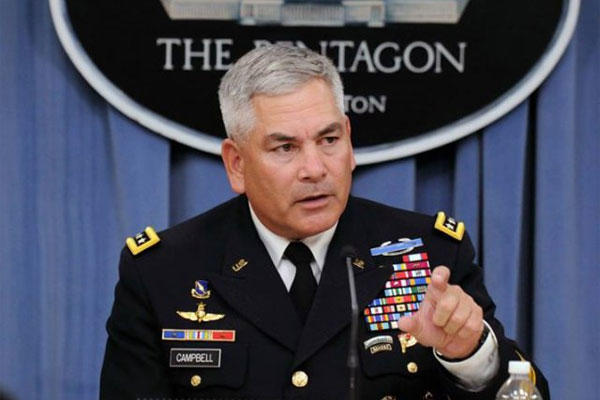The U.S. commander in Afghanistan said Thursday that he was urging "greater flexibility" on the U.S. troop presence and where they are based under President Obama's withdrawal plan to end the training, advisory and counter-terror mission by 2017.
"I have provided options on adjusting our force posture through my chain of command" to the White House and the Pentagon, Army Gen. John Campbell said in testimony to the Senate Armed Services Committee (SASC).
Campbell said he was looking for "more flexibility on the glide slope" of the withdrawal, and more flexibility where U.S. troops are based outside of Kabul.
Campbell said he also was focused on preventing the Islamic State of Iraq and Syria (ISIS) from gaining influence in Afghanistan. Campbell referred to ISIS with the alternative terms Daesh and ISIL when referring to the militant group.
"The possible rise of Daesh, or ISIL, is also a new development," Campbell said. "Thus far we believe that the nascent Daesh presence in Afghanistan represents more of a rebranding of a few marginalized Taliban, but we're still taking this potential threat, with its dangerous rhetoric and ideology, very, very seriously."
Earlier this week, the Pentagon said that a U.S. drone strike in southwestern Helmand province had killed Abdul Rauf, a recruiter for ISIS and a former prisoner at the Guantanamo Bay, Cuba, detention facility.
"We are seeing reports of some recruiting" for ISIS, Campbell told Army Times last month. "There have been some night letter drops, there have been reports of people trying to recruit both in Afghanistan and Pakistan, quite frankly."
Senators from both sides of the aisle said the withdrawal from Afghanistan should be "conditions-based" and not determined by a rigid timetable.
Currently, there are about 10,600 U.S. troops in Afghanistan. Under Obama's plan announced last May, the number of troops would be halved in 2016 and the U.S. military presence would be effectively reduced to what Sen. John McCain, R-Arizona, called "a small presence in our embassy in Kabul by the end of next year."
The continued threat from the Taliban and the emergence of a potential ISIS threat "illustrate the major liabilities of a calendar-based draw approach and highlight the need for a conditions-based approach," said McCain, the new SASC chairman.
Sen. Jack Reed, D-R.I., the ranking Democrat on the committee, said "I share the concern of many on this committee that any future reductions in U.S. force levels in Afghanistan should be based on the security conditions at the time of the proposed reductions, taking into account the capabilities of the Afghan security forces and the status of the counterterrorism fight."
-- Richard Sisk can be reached at richard.sisk@military.com
































